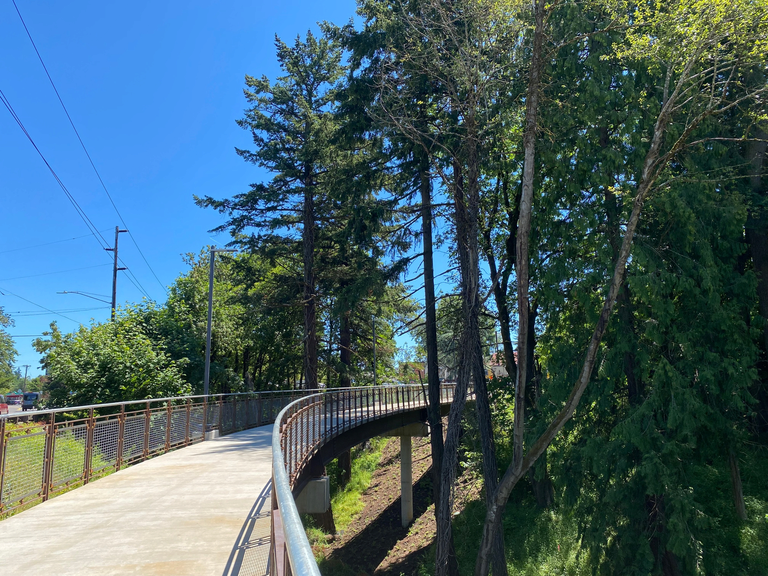With a dozen members seated in a circle each Wednesday morning at Ashland’s Temple Emek Shalom, Rabbi Joshua Boettiger leads “Jewish Meditation.” Though in its silence, peace and community, it resembles Buddhism, it’s decidedly Hebraic in the brief introductory lesson. The silence of the meditators is already rich as they cross their legs and begin their long exhales, letting the peace of the large, darkened room spread about them. They’re already used to the inner happiness shepherded by Boettiger, who brought a host of alternative approaches to knowing the spirit when he came to lead the congregation a few months ago.
Delivered in soft tones, Boettiger’s recent five-minute lesson speaks of the traditional vertical orientation between heaven and earth, but he asks meditators to notice that most of our planet is water, and the earth seems to sit on this. “We’re given just enough Earth to live a meaningful life on. Everything under this is changing. Water can be a disconcerting image, but also deeply comforting,” says Boettiger, whose passion is envisioning and building sacred spaces. He calls on meditators to recognize that Isaac is a “nondescript patriarch … with a lot of suffering in his life” and he’s digging these three wells going down into the Earth as he works on his “inner story.” Beat poet Gary Snyder wrote, “You find your place on this planet and you dig in.”
That’s what meditation is, Boettiger says.
“The metaphor of digging wells is useful. Even if we each have a specific place we begin to dig from – akin to a particular tradition, or our particular story – each of us ends up in the same universal place where we find water, nourishment, sustenance.” The earth underneath us, he says, supports us when we sit, we can feel it holding us up – and we return to the breath as the baseline, as a way of focusing. And then, except for three taps on the brass meditation bowl, comes sweet silence – and it is undeniably light and good, “an airing out of the heart,” as Boettiger says afterward.
“It’s a very ancient practice,” says Boettiger, who first encountered Jewish meditation 20 years ago at a retreat. “It was a turning point for me. I reconnected to my Judaism. It felt so alive and germane.” The great-grandson of President Franklin D. Roosevelt, Boettiger notes a large number of Jews made pilgrimages to India in the 1960s and 1970s and brought back Eastern spiritual practices. “You can’t just shoehorn it into Judaism, willy-nilly. The external form that we practice is very self-consciously borrowed from a Vipassana Buddhist framework, but the inner form, the mindfulness work that meditation invites – I deeply recognize it as Jewish,” he says.
Boettiger speaks of meditation’s inner silence as something akin to prayer.
“At a minimum, meditation lowers stress, and if as a result of meditation, we are able to move through our days more mindfully and with more clarity, we are also moving more safely,” Boettiger says.
Filing out of meditation, congregants note their sense of inner peace. “It’s really a great way to start the day and be present for my work,” says Robin Heald. “I tend to be speedy and fragmented at the beginning of the day, and this really helps me.” “I love it,” says Steve Saturen, “and am amazed I can do it. My mind goes everywhere, usually.” “To me, it helps integrate the weekly chantings that we sing in Torah with my own life in a very meaningful way,” says Sasha Borenstein.
Dan Murphy, a Catholic, called the meditation circle “splendid in its beauty and simplicity, guiding on a parable or teaching and ending in a blessing. It connects with my most sacred truth, even though I’m not a Jew, as I believe we share this reality as made in God’s image.” Says Boettiger, “My Judaism has been so enriched by meditation practice; in a way, it has helped re-reveal Judaism to me.”
John Darling is an Ashland freelance writer.





